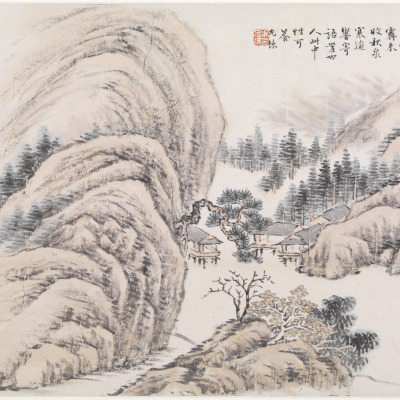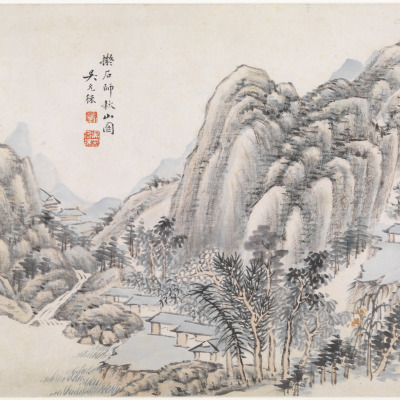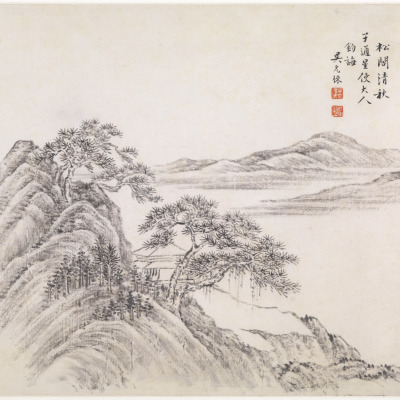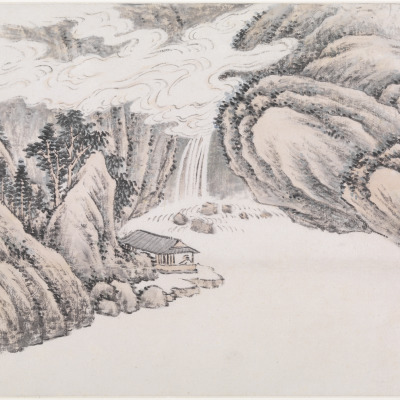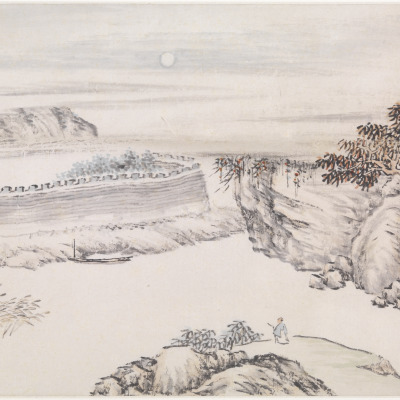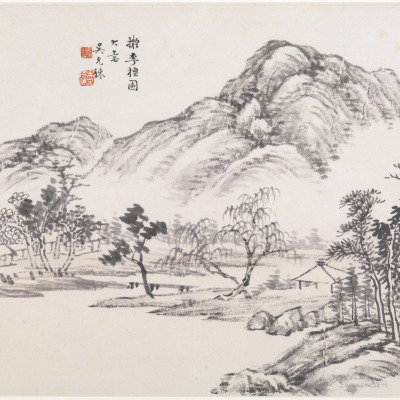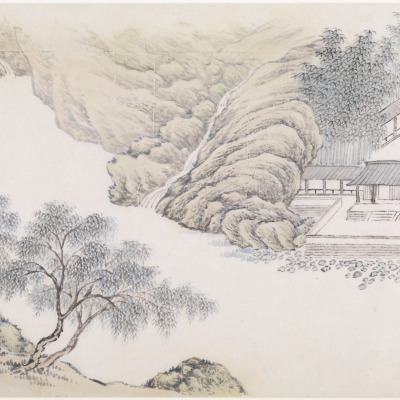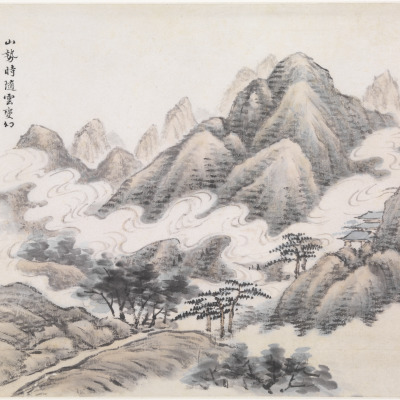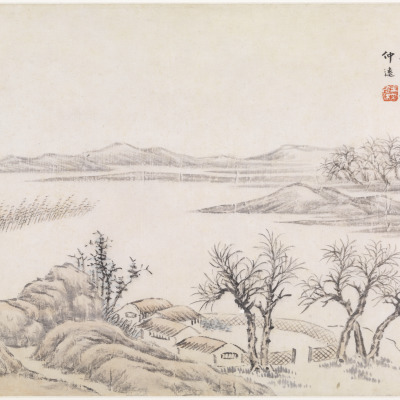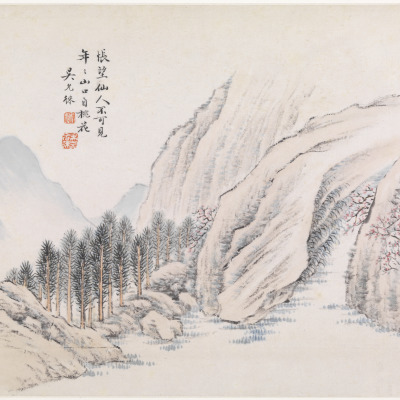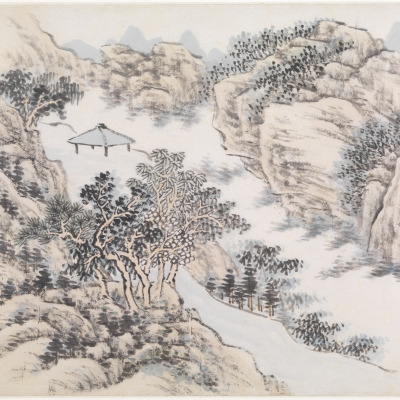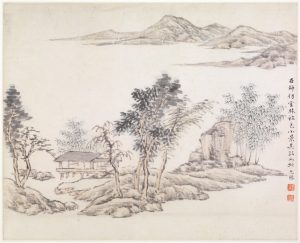
Art-Making Activity: Make a Decorative Scroll
Painting has been an important part of the Chinese culture for centuries. Learn about how scrolls were an artistic and scholarly form of expression highly valued in the Forbidden City, and assemble and paint a scroll of your own!
Overview
A scroll is a painting mounted on a durable decorative backing with rods at either end for the purpose of rolling it up for transportation or storage. Scrolls were popular in China as a surface to display and transport painting, calligraphy, and poetry. There are two main types of scrolls, a hand scroll and a hanging scroll. Ink, brush, and paper became widely used during the Han period (206 BCE – 220 CE). The ability to write (calligraphy) was a source of power, authority, and religious knowledge that only scholars and royalty possessed. Therefore Chinese culture has always held a deep respect for painting and calligraphy. This developed into the orthodox school of literati painting in the late Ming Dynasty.
Silk and paper were used for funerary banners, religious texts, landscapes, poetry, portraiture, and state records. Silk was expensive and had to be treated in order to create a good surface for painting, so paper made from bamboo, mulberry, jute, and other materials was often a preferred choice. The inks used were water-based pigments made into cakes (like your watercolors!). The pigments came from colorful minerals like azurite, malachite, and iron oxide.

Album of Twelve Landscape Paintings: Landscape in the Style of Ni Zan, Wu Yunlai, late 19th century, ink and color on paper, Gift of the Family of the Honorable and Mrs. Walter S. Robertson
In art and writing, natural elements such as landscapes, animals, and trees helped artists communicate ideas. In Chinese thought, nature is part of humanity rather than separate. Therefore flowers, trees, and animals represent aspects of life and people. For example, the way that a pine tree grows upright at first, then bending and reaching out shows how people can become humble while still growing up towards the sky. Bamboo was also an extremely popular subject and was associated with characteristics of a true gentleman: strong, virtuous, and humble. Plum blossoms represented purity and late winter because it is the first to bloom. Flowers and animals each had special meanings, so that to understand them was almost like being able to read an artistic language.
The Chinese imperial court (the emperor) had court painters who were commissioned to paint and write for them. These paintings would be stamped with the Imperial seal. A seal, or chop, is like a stamp with a special design like a signature. An artist would stamp his/her work and often important people who looked at the work would add their seal or “stamp of approval.” During the Ming Dynasty, fish paintings became popular, with the carp as a symbol of a powerful scholar. This was because of the legend of the Dragon Gate, in which carp were able to jump over the gate and transform into a dragon (and dragons symbolized the emperor).
Activity
Materials:
- Bamboo brush
- Watercolor paints
- Fish stamps
- Ink
- Scroll paper
- Decorative paper
- Glue sticks
Directions:
- Select your scroll paper.
- Use the carp stamps to stamp at least 2 fish. Think about your composition (placement).
- Use the markers to add details to the fish. Be sure to add eyes, whiskers, and a scale pattern.
- Use watercolors to paint the fish and the water around the fish.
- Once your scroll dries, glue decorative paper on the border.
- Select a Chinese ‘chop’ or seal to stamp on the top left of your scroll.
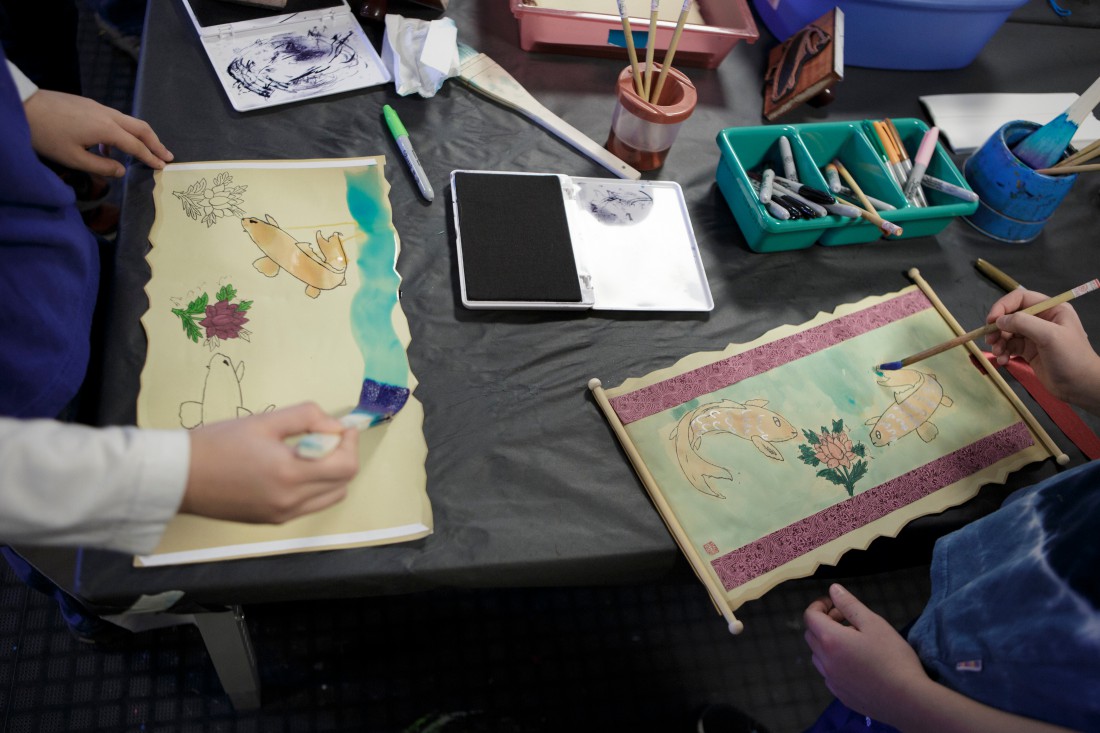
Photo: Jon-Phillip Sheridan © Virginia Museum of Fine Arts ChinaFest! Year of the Wood Sheep
